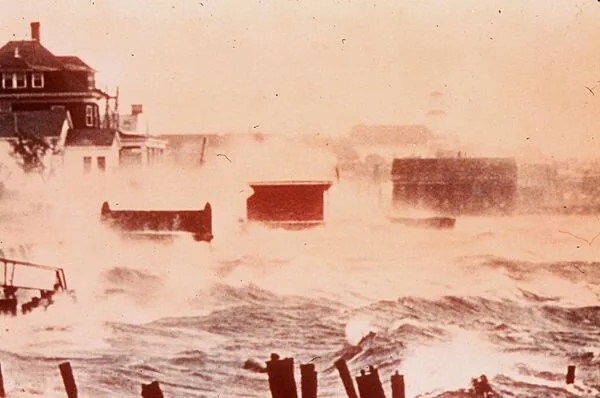Some love hurricanes
Storm surge in eastern Connecticut during Hurricane Carol, on Aug. 31, 1954.
Adapted from Robert Whitcomb’s “Digital Diary, in GoLocal24.com
The hype about Tropical Storm Henri was extreme, even by New England storm standards. After all, Henri, at its height offshore as a minimal hurricane, had lighter winds than many winter Nor’easters that hit us.
But then, many people enjoy the hype and indeed like hurricanes, as long as their property isn’t damaged, and they get their electric power back within a day or two, which they usually do. Storms take people out of themselves by putting on a diverting show. And they jazz up late summer, when many people are tiring of the season, especially this year with its months of steamy weather. (How do people live in Florida year round?)
Hurricane Carol (Aug. 31, 1954), quickly followed by Hurricane Edna (Sept. 11, 1954) left many New Englanders without juice for up to two weeks. These days, utilities pump up an oncoming storm to ensure that they get timely help from utilities outside the region and that they won’t be blamed in those rare cases in which a storm turns out to be worse than forecast, such as last year’s Tropical Storm Isaias in Connecticut.
My most vivid memory as a boy of hurricanes, besides watching a couple of trees being uprooted, is the sweet smell of Sterno, which we used for cooking after the power went out.
Those Unsightly Lines
At India Point Park, Providence. Note power lines.
— Photo by Tim Burling
People in Providence’s Fox Point neighborhood, at the head of Narragansett Bay (or the head of the Providence River, if you prefer) who have fought for almost 20 years to get the utility lines from India Point Park to East Providence buried must have felt a pang when they read in GoLocal”
“The Scenic Aquidneck Coalition has announced the completion of a project to bury power and communication lines along Third Beach Road and Indian Avenue in Middletown, Rhode Island. Inspired by the 2017 Second Beach project, the Scenic Third Beach Project removes the rest of the poles on Sachuest Point along Third Beach and up Indian Avenue, promoting ‘coastal resiliency, restoring the historic landscape and enhancing the area’s scenic appeal.’’’
But the Middletown project only cost $4 million and was entirely paid with private donations. (There are plenty of rich individuals and organizations on Aquidneck Island.) The price of burying the Fox Point lines has risen to $33.9 million, and it remains uncertain how the cost would be shared among Providence and East Providence property-taxpayers and statewide electricity rate payers and taxpayers and National Grid – or other permutations and combinations.
I suspect that a big hurricane that takes out power for a long time would work wonders in getting those lines buried. Never waste a crisis.

